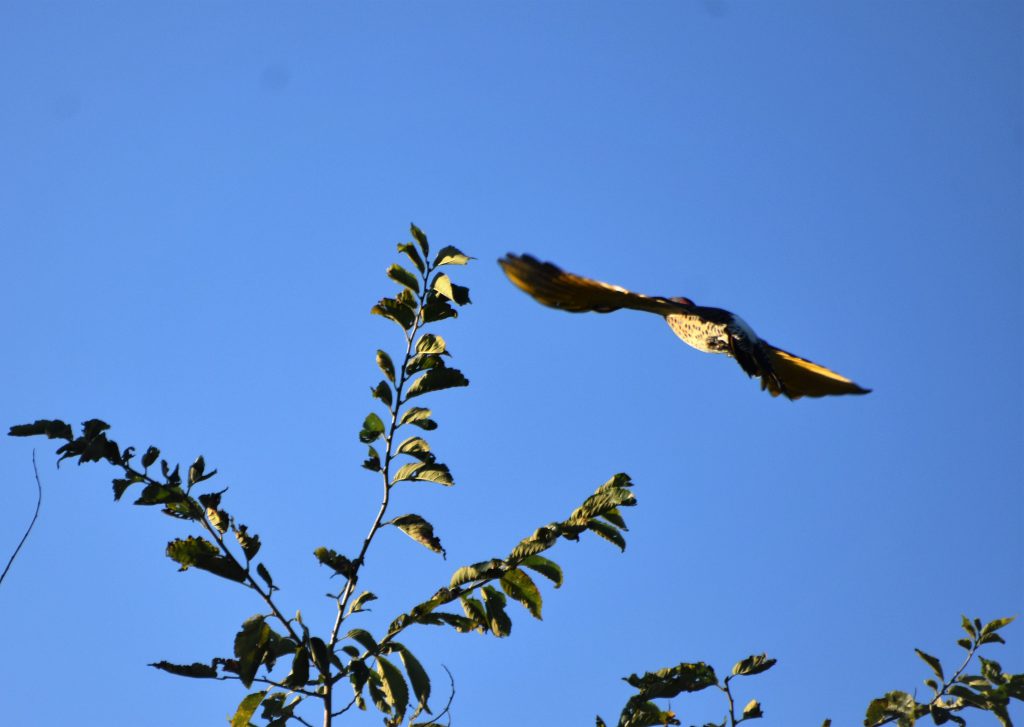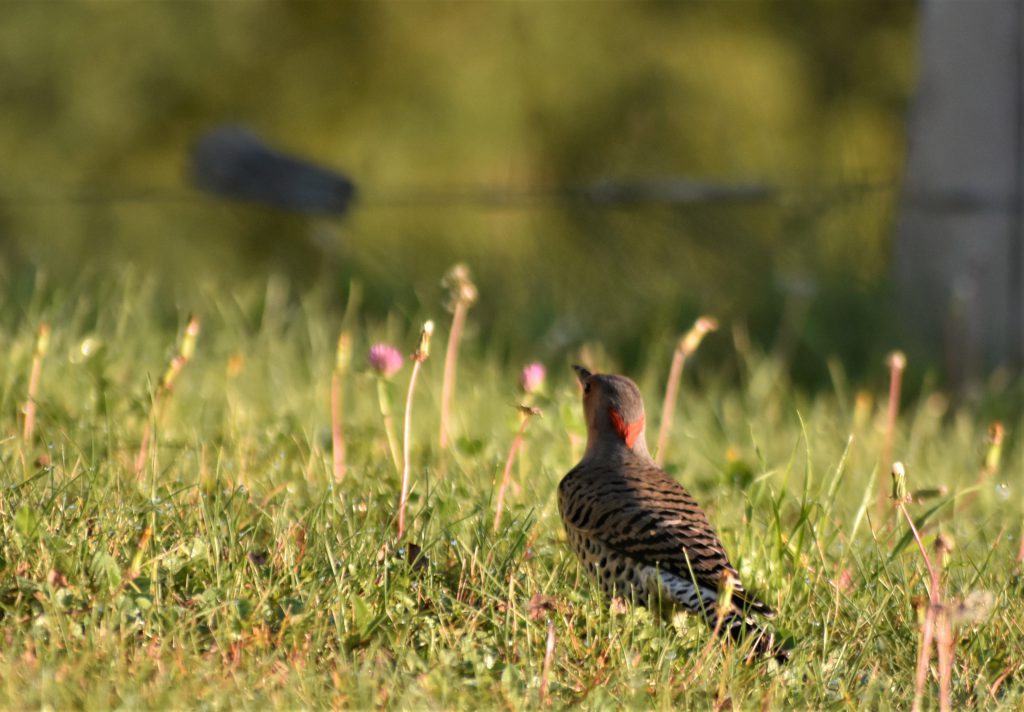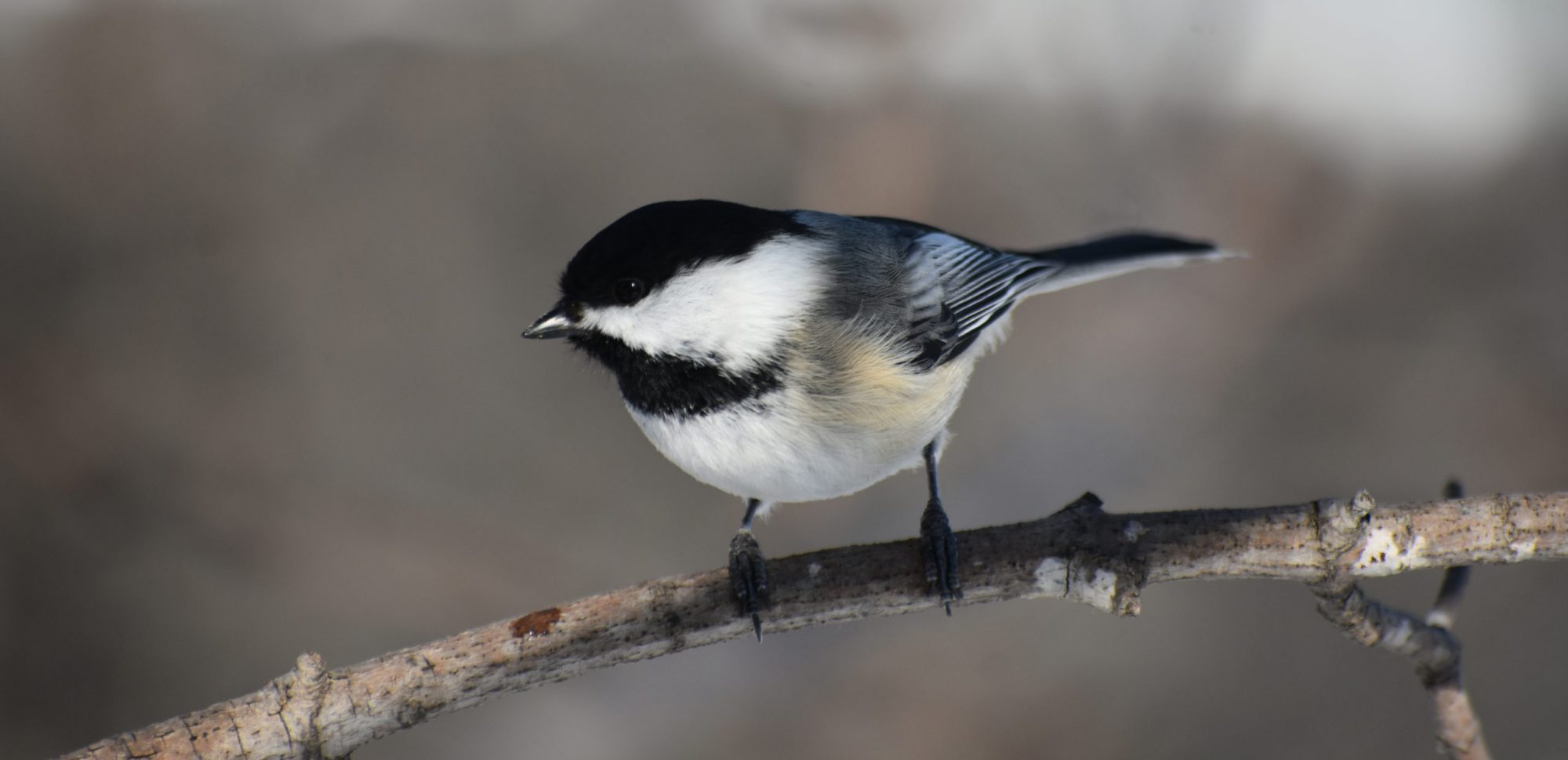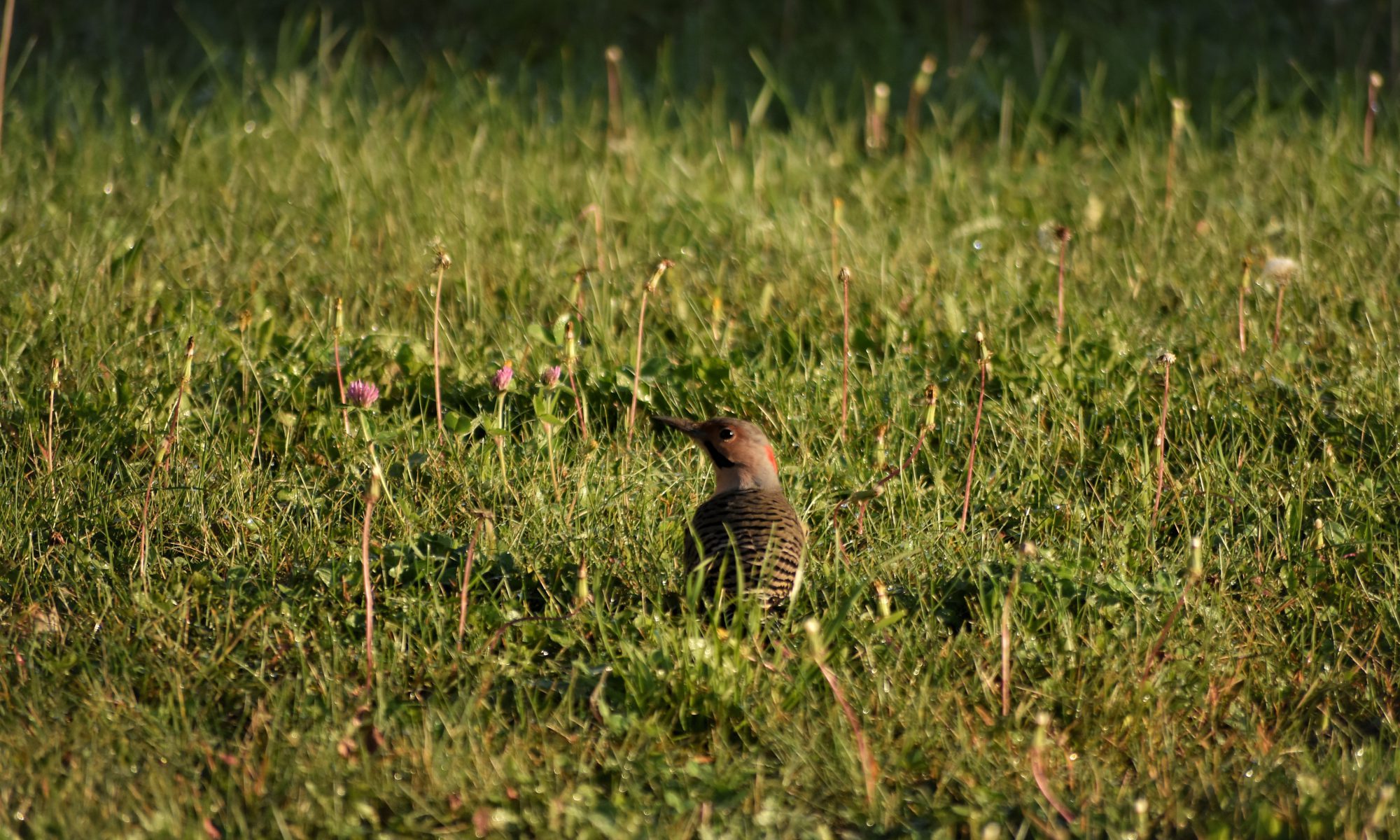Nice to have you back again! Today, I’d like to acknowledge one of my favorite birds – the Northern Flicker (Colaptes auratus).
Flickers come in two varieties: yellow-shafted and red-shafted. True to their name, the biggest difference is the color of their flight and tail feathers – when a yellow-shafted takes flight, you see a flash of yellow, if you see a red-shafted, its wings and tail show red underneath. There are even some flickers with pink shafts, which comes from eating an invasive species of honeysuckle (read more about it at https://www.audubon.org/news/mystery-solved-invasive-berries-blame-turning-flickers-feathers-pink ). The two will sometimes interbreed where their ranges overlap (yellow-shafted live in the east, red-shafted are found in the west), resulting in orangish feathers and a mix of the two types’ features. Here, I only get the yellow-shafted variety, but both are gorgeous birds!

Flickers are woodpeckers, but unlike most woodpeckers, who are black and white with the occasional red or yellow, they’re a collage of colors and patterns – brown heads, striped backs, spotted stomachs, black collars, and for males, a red cap and a black (or red, depending on which type it is) mustache.

They live year-round in most of the US, and during the breeding season can be found in most of Canada. You’re most likely to find a flicker on the ground, where they forage for ants or beetles, rather than hitching up a tree like a traditional woodpecker, but they nest in tree cavities like most woodpeckers, and will readily move into a nest box.
Northern Flickers are very similar in appearance to Gilded Flickers, but their range is much larger – Gilded Flickers only live in the Sonoran Desert. Unless you live in that area, you shouldn’t have much trouble telling this unique species apart from the other local woodpeckers!
Most people in the flicker’s range have probably seen one, as they’re very common, and if you have, you’ll understand why I love this amazing, unusual bird!

